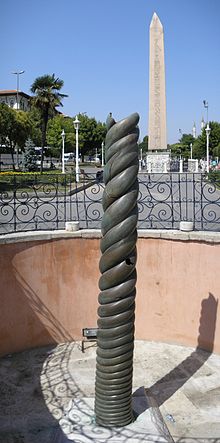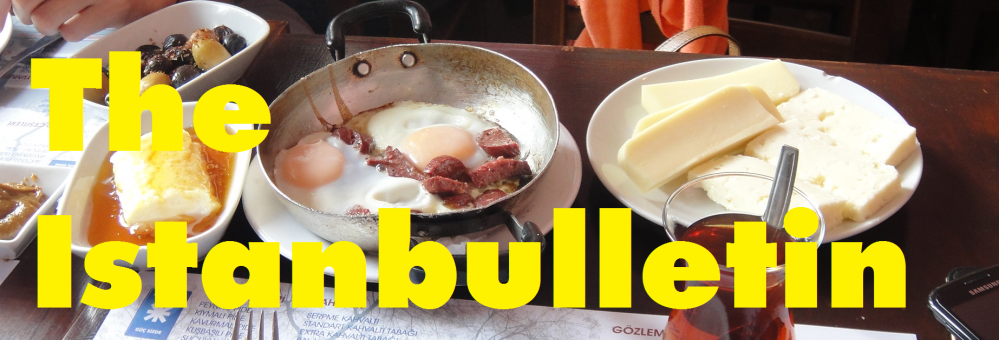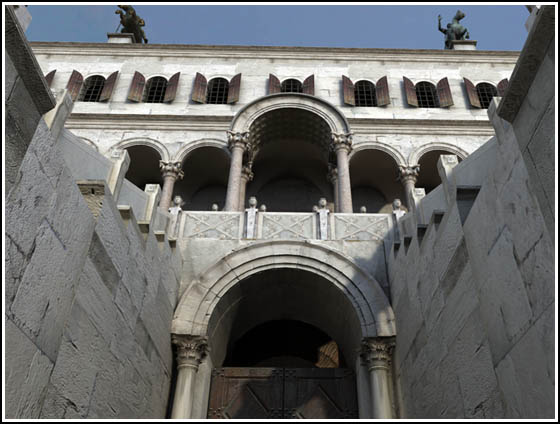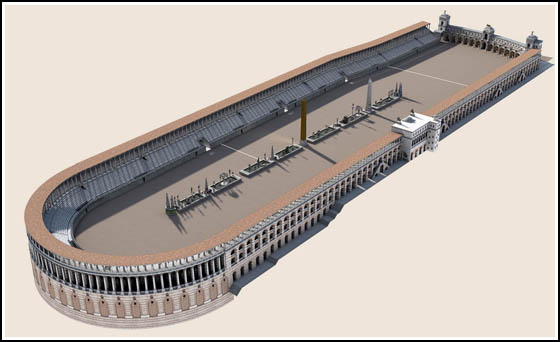 Byzantines have received bad press throughout history. They are either whining, boring God-botherers, spending their days splitting theological hairs, or they are decadent lushes drinking retsina until they puke it over their scantily-clad dancing boys. Most recently they copped an anachronistic savaging at the hands of the makers of Fatih 1453, a Turkish film so far from historical truth that it was given an R rating in Germany.
Byzantines have received bad press throughout history. They are either whining, boring God-botherers, spending their days splitting theological hairs, or they are decadent lushes drinking retsina until they puke it over their scantily-clad dancing boys. Most recently they copped an anachronistic savaging at the hands of the makers of Fatih 1453, a Turkish film so far from historical truth that it was given an R rating in Germany.
One of the most repellent scenes from that steaming pile of crap was of the crazy Byzantine emperor being so dastardly that Sultan Fatih Mehmet had no choice but to break into Constantinople and save everyone from his murderous rages. This scene took place in the Hippodrome, which actually makes some semblance of sense. Though not much.
The Hippodrome, you see, was the centre of so much of the civil life of Byzantium, and had the Constantine XI actually been crazy, or if he had tens of thousands of loyal psychopaths to command, or if the Hippodrome was actually pretty much intact, that that scene could well have happened. But it didn’t. So shut up, film.
Today, and most of you with a ticket to Sultanahmet or a guide-book already know this, what remains of the Hippodrome is a few artifacts, a couple of parallel roads and a massive terrace that supported the end of the track. To get a better idea of the scale and awesomeness of the Hippodrome as it originally looked, go to Byzantium1200, a wonderful website full of computer reconstructions of buildings from medieval Constantinople.

Image taken from Wikipedia.org
You can get the broad strokes from your guidebook or the internet or by eaves-dropping while standing close by a tourist group. Built in the third century. Used for races. Big! Sixty thousand people. An obelisk from Karnak, and some other phallic things nearby. And so on.
You can get those facts anywhere, but we at The Istanbulletin thought it might be hippo-tastic to have a think about the what actually went on there. Because it went DOWN in the Hippodrome.
The races were utter madness. Everyone in Constantinople supported a team. They started off with four, until the reds and whites were absorbed by the teams that really counted: the blues and greens. Like today, sporting heroes were made rich. It got political. There were riots. There were stages when law and order completely broke down over the result of a race. The races themselves were pretty colourful as well. Plenty of horses and riders were snapped to splintery death in outrageous crashes.
The emperor had a box in the Hippodrome which lead straight from the palace. He would sit there being regal, but the proximity of thousands of his people, who probably had a nip of something on the way, gave the races an informal feel which sometimes lead the crowd get fancy notions into its head, like that it had a say in how the empire was run. Justinian’s building program forced him to bleed his subjects white, literally in some cases. Public muttering lead to outright chaos in 532, as the blues and greens stopped barracking their own teams and screamed Nika (or victory). After five days of mayhem, in which much of the city was burned down, a deal was struck with the Blues, and upwards of 30,000 Greens were slaughtered by imperial troops in the stands of the Hippodrome.

Image taken from Wikipedia.org
Speaking of blood, even after the races went out of fashion, the Byzantines managed to spill plenty in the Hippodrome. They went through emperors pretty fast; though they often spared their lives, content to mutilate the old emperor to make him ineligible for the crown. Justinian II had his nose slit there, which must have been both painful and humiliating. The crowd that came to the Hippodrome to witness the death of tyrant Adrionikos Komnenos was immense. Having been tied to a post for three days, passersby had the very rare chance to torture their former emperor. Prior to being lead into the Hippodrome backwards on a donkey, he had had teeth ripped out, his hand cut off and had suffered constant beatings. But it was in the Hippodrome that he copped a sword in guts. Think about that next time you are wandering about that area.
Racing stopped being a thing way before you would think, but the Hippodrome was used for public ceremonies and entertainment right down to the lameass, poverty-stricken end. The Ottomans busted it up for building materials, but before moving on past the Byzantines, we should just have a mention of the Fourth Crusade. Because when you are closing you eyes and imagining the crazy and bloody past of the Hippodrome, it would be a shame to ignore this pack of utterly awful douchbags. It is hard to do justice to their foulness. Forget about their hypocrisy: they weren’t the first bunch of barbarians to rape and murder because they were the wrong kind of Christian. It wasn’t even that they melted everything gold down into coin. That happens. What highlights their inhumanity most clearly is how they treated the statues of the Hippodrome. Constantine plundered the entire empire to make his city beautiful. In 1204, Constantinople was basically a massive storehouse for cool stuff from antiquity. All the best art, many works of literature. What did the crusaders do? They burned the lot of it. The many statues of the Hippodrome were smashed to powder. One of the few survivors are the Four Horses that are currently in Venice inside St Mark’s. Classy move, Venice.

Image taken from Wikipedia.org
The final little vignette from the past comes long after the Byzantines had been scattered or absorbed. Near the obelisk today sits the stub of a statue. This, in my opinion, should be seen as one of the defining monuments of western civilization. The Delphic Tripod was made from the melted bronze armour of the Persians that died at Plataea, a battle that pretty much gave Greece and all good Greek things a chance to not be snuffed out by the Persians in an all-out despotic boning. While the gold bowl was long since looted, the triple heads of the entwined snakes remained intact until the 18th century. Surviving earthquake, riots, Crusaders and Ottomans, these snakes were finally decapitated by a lone drunk staff member of the Polish embassy. Which pretty much sums up how random and stupid history can be.
So next time you are strolling around the Hippodrome wondering what to have for lunch, try thinking back to the days when someone was doing something unspeakable right where you are standing.
 With the Turkish constitution being re-written, with the unstated aim of making the current Prime Minister into a kind of Aztec God-King with laser beams for eyes, maybe we should think about some of the things that won’t change.
With the Turkish constitution being re-written, with the unstated aim of making the current Prime Minister into a kind of Aztec God-King with laser beams for eyes, maybe we should think about some of the things that won’t change. Fiona, who many of you enjoy seeing frolicking in some of our more visual posts, thinks it is cheeky and bold. If it were a person, she would be a fiery red head with a twinkle in her eye. Sigh. I have been single for too long.
Fiona, who many of you enjoy seeing frolicking in some of our more visual posts, thinks it is cheeky and bold. If it were a person, she would be a fiery red head with a twinkle in her eye. Sigh. I have been single for too long. Going back further, there is another legend which states the moon was in crescent form when the walls of Constantinople were breached in 1453. It was henceforth adopted as a symbol of Ottoman dominance. But the truth is that it comes from even before that night.
Going back further, there is another legend which states the moon was in crescent form when the walls of Constantinople were breached in 1453. It was henceforth adopted as a symbol of Ottoman dominance. But the truth is that it comes from even before that night.







